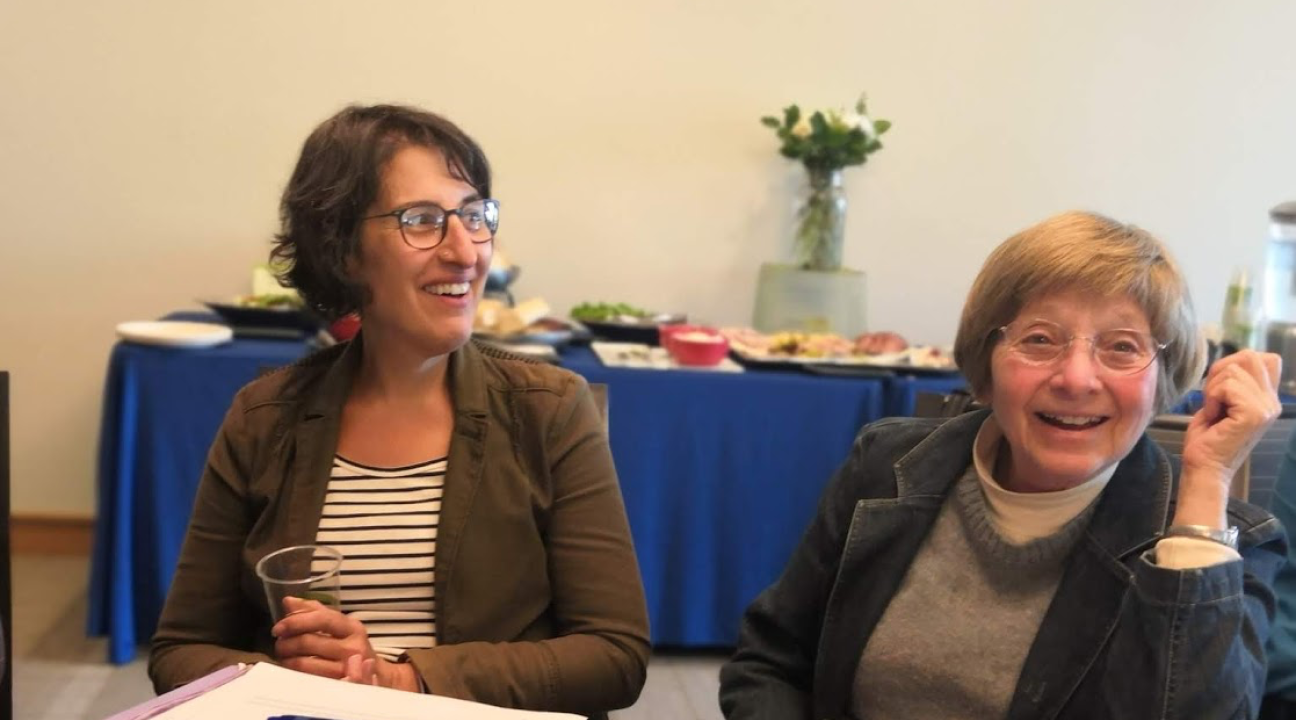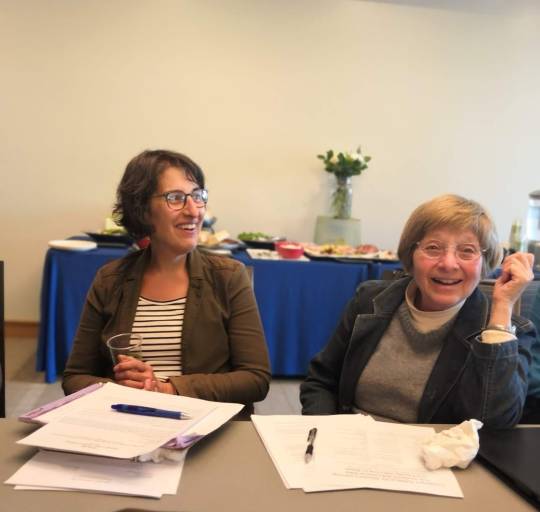Creating a Syllabus for Service-Learning that Students Will Love to Take and Faculty Will Love to Teach
The Center for Community Engagement held a viewing party for the “Learning-Centered Syllabus for Service-Learning and Community Engagement Courses” webinar which invited instructors and faculty to participate. That’s right – a webinar viewing! This webinar viewing was sponsored by the CSU Chancellor’s office and invited many other campuses to be a part of the discussion. I have attended many webinars from my desk, but the opportunity to participate in a larger discussion in-person doesn’t come around often. I was glad to see such a great turn out, as this would provide us with a wider range of perspectives. Although there are many Service-Learning courses given on campus, finding instructors that have the shared interest in designing a course that maintains the University’s mission in mind while helping students understand how a Service-Learning (SL) course accomplishes that is inspiring and unique.
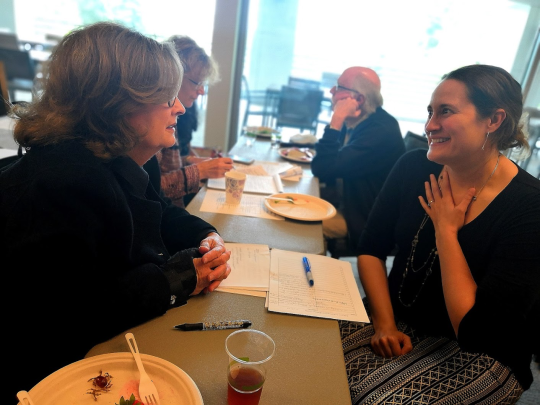
On the left we have Dr. Susan Campbell, CCE
Faculty Fellow, with Aja LaDuke from the
School of Education engaged in conversation.
The conversation touched upon where in the syllabus students could get a better understanding of how a SL course differs from other courses they may be taking or have taken in the past. Have you ever looked at a syllabus and been overwhelmed? If you have you’re not alone. During my time as a student I could remember reading many syllabi and having mixed feelings about what to expect for the first day of classes. I was surprised to hear that this was a new concept to faculty.The idea that language used in a syllabus should convey a welcoming tone that shows that the instructor cares and/or wants students to succeed. A syllabus is the document that introduces the student to the instructor and course, it helps to set expectations for both sides before their first day of class. That was one of the issues instructors tackled during this viewing. How can we ensure students get the information they need without overwhelming them? After comparing several syllabi samples, many of the participants agreed that having a to-the-point syllabus is important as long as it is paired with a clear explanation of what the course objectives are within a Service-Learning pedagogy.
[Why Don’t Students Know About Service-Learning?] (2014)
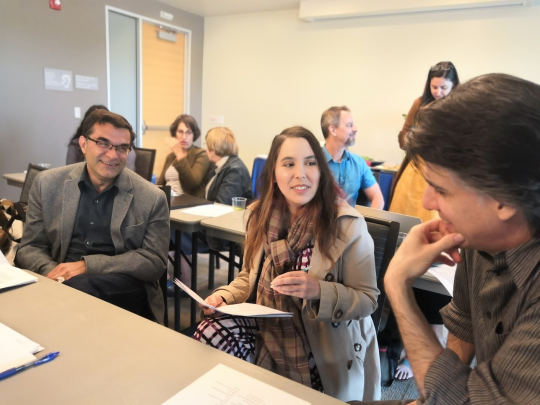
From left to right, we have SSU’s Engineering
Science Department Chair, Dr. Farid Farahmand
along with Anamary Leal from the Computer
Science Department and Michael Cohen from
the Department of Biology.
I had the chance to talk to faculty after the viewing. I was delighted to see faculty that had helped me throughout my time at Sonoma State. When I spoke with Dr. Susan Rahman, a lecturer from the Sociology department, she appreciated the connections she was able to make with other faculty members. I asked what changes to her syllabus might she be making, she responded, “I will be reviewing wording [language] to assure it [syllabus] feels less threatening,” along with “listening to students’ voices to find out what helps them thrive.” While that was an important theme for some participants, many of the faculty also discussed Beautiful Questions. These are questions that help students start thinking about what the week’s topic/discussion will be about and how students can reflect on that during their SL experience. I spoke with Dr. Renata Schaefer, a lecturer from the School of Business and Economics, about what she was taking from the webinar. Dr. Schaefer responded, “I want a student-centered syllabus that will be more exciting and energetic. By adding beautiful questions, there will be no dry content and it will be more thought provoking.” Dr. Schaefer brought up a great point that others had mentioned, the discussion could have benefited from a follow-up webinar that had a greater focus on service-learning methodology and best practices.
Overall the webinar viewing went quite smoothly with minor technical difficulties. The webinar viewing provided faculty the opportunity to make connections, brainstorm, and revise how SL is discussed in their syllabi and changes they may consider to be more student-centered. I appreciated the atmosphere that the discussion brought, attendees remained open-minded and it showed that Sonoma State faculty are constantly working to improve and meet Sonoma State’s mission.
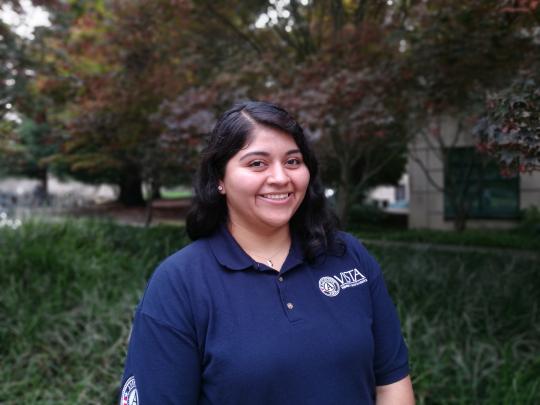
Author: Elizabeth Pesqueda Villaseñor


